Oregon Grape
A common member of the Barberry family that can now be found in parks, gardens and some woodland.
| Hedgerow Type | |
| Common Names | Oregon Grape, Holly Leaved Barberry, Oregon Holly |
| Scientific Name | Mahonia aquifolium |
| Season Start | Jan |
| Season End | Dec |
Flowers
Small bright yellow flowers hanging in dense clusters above the leaves in either Spring, Summer, Autumn or even Winter.
Fruit
Long clusters of Purple to Black berries covered in a light bloom giving them a blue appearance.
Habitat
Mainly in gardens and parks but occasionally spread to the wild as this picture of Mahonia in woodland shows.
Possible Confusion
Holly looks similar but the fruits of holly are orange/red.
Taste
The berries can be very tart but mixed with other sweet berries or with the addition of honey or sugar they are quite delicious.
Frequency
Becoming more common.
Collecting
The ripe berries should be very dark blue to black with a white sheen.
Medicinal Uses
Mahonia has been used to treat eczema and psoriasis but can cause a rash itself and side effects include a burning sensation, hardly a relief from the symptoms of eczema or psoriasis I’d have thought.
Other Facts
The inner bark and roots can be used to make a yellow dye.



 (29 votes, average: 3.79 out of 5)
(29 votes, average: 3.79 out of 5)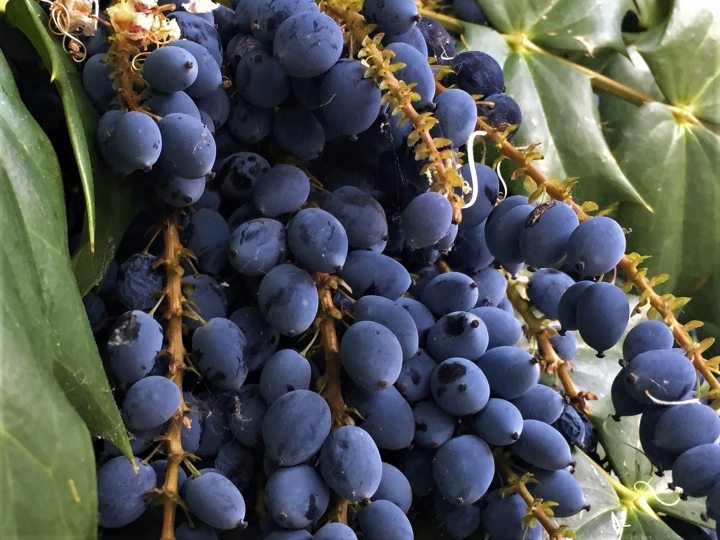
















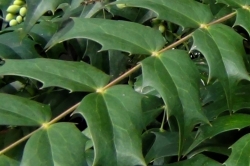
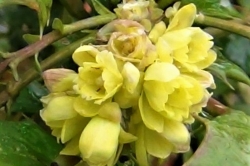
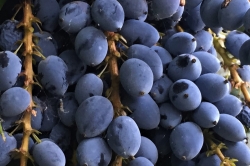
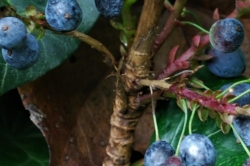
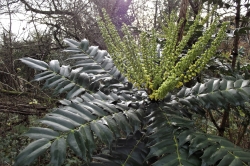





4 comments for Oregon Grape
I did not realised that this plant in my garden was an edible fruit tree. I have more than one. I think dropped by the birds very conveniently and perhaps a
Blessing. I always thought it was Washington Grape until I researched its history on the internet and was put right. I have quite a few other fruit trees in my
garden and this is very exciting to know that I have now acquired a different variety to sample. The trees are now laden with fruit and I shall wait until they are
ripen to harvest them. In the past I have left them to the birds but this year I shall see what the fruits taste like according to my judgement of the plant. Thanks
for helping me to recognise the plant as an Oregon Grape/Berry.
When you call it a tree it concerns me a little. Just make sure you don’t confuse it with Holly. Holly is toxic to humans.
Here in Washington state USA we have many varieties of organ grape. Most of them are quite small, some varieties don’t get much taller than your ankle. There is a variety that can get about 10 feet tall. They are all spindly plants and the inner bark and often wood is yellow.
The berries vary in quality from variety to variety some are sweet enough that you don’t need any other adornment to enjoy them but most are very tart or sour and some even a bit better. Also the young leaves before they harden off are edible and delicious on most varieties. The young leaves are also very pretty in a salad as they are shiny and often red.
Good luck and enjoy foraging.
We have a nice bush of the grape holly I tried one today and found them very sour. Will waite for them to turn black. Hopefully they will be sweet. We have lots of wild blackberries that are fantastic when they turn black and soft. Can’t waite to try the Grape holly.
They are ripe when black/purple and soft but they do retain some tartness, I like this but some people use them in puddings with added sugar to compensate.